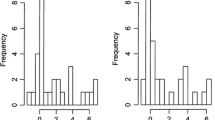Summary
The article takes the drug Xigris as an example to investigate the consequences of implicit rationing in the health care system. First of all the evidence as the basic information for an allocation is clarified. Then the question is answered who should be responsible for the allocation. The article studies the possibilities to react in case of limited resources and expensive treatments within a hospital. The pros and cons of the different options are scrutinised.
Zusammenfassung
Der Artikel nimmt das Medikament Xigris (aktiviertes Protein C) als Beispiel, um die Folgen der impliziten Rationierung im Gesundheitswesen zu erörtern. Zunächst wird die Frage der Evidenz als Grundlage für Verteilungsentscheidungen untersucht. Anschließend wird die Frage der Zuständigkeit für die Verteilungsentscheidungen geklärt. Der Artikel strukturiert die prinzipiellen Möglichkeiten, auf die Mittelknappheit innerhalb eines Krankenhauses zu reagieren. Die Vor- und Nachteile der einzelnen Optionen werden untersucht.
Similar content being viewed by others
References
Angus DC, Laterre P-F, Helterbrand J et al (2002) The effects of Drotrecogin alfa (activated) on long-term survival after severe sepsis. Chest 144(4):51p
Albrecht H (2003) Kein Herz für alle. An der Rationierung in der Medizin führt kein Weg vorbei. DIE ZEIT 24:29
arznei-telegramm (2002) Aktiviertes Protein C (Drotrecogin alpha, Xigris) bei Sepsis? arznei-telegramm 33(11):111–112
Bernard GR, Vincent J-L, Laterre P-F et al (2001) Efficacy and safety of recombinant human activated protein C for severe sepsis (PROWESS) N Engl J Med 344(10):699–709
Bernard GR, Margolis B, Shanies H et al (2002) Efficacy and safety of Drotrecogin alfa (activated) in the treatment of adult patients with severe sepsis: report from a single-arm open-label trial in the United States. Chest 122(4):50–51
Davies A, Hutton J, Ridley S, Chinn C, Barber B & the PROWESS Economic team (2002) Cost-Effectiveness of Drotrecogin alfa (activated) for the treatment of severe sepsis in the UK. Intensive Care Med 28(Suppl 1):161
Ham C (1997) Priority setting in health care: learning from international experience. Health Policy 42:49–66
Klöss T (2002) 21st International Symposion on Intensive Care and Emergency Medicine (ISICEM). Medizin im Dialog 32–26
Laterre P-F, Howard L, Ball D et al (2002) The effects of Drotrecogin alfa (activated) on hospital mortality, length of stay, and discharge location. Chest 122(4):51
Launois R, Riou-Franca L, Guidet B, Aergeter P, Meshaka P, Pinton P (2002) Cost effectiveness analysis of Drotrecogin alfa (activated) as a treatment of severe sepsis. Intensive Care Med 28(Suppl 1):161
Marckmann G, Siebert U (2002) Kosteneffektivität als Allokationskriterium in der Gesundheitsversorgung. Z med Ethik 48:171–190
Nelson AR, Schneider H, Chinn C, Clouth J, Burchardi H (2002) Cost-Effectiveness of Drotrecogin alfa (activated) for the treatment of severe sepsis in Germany. Intensive Care Med 28(Suppl 1):161
Raspe H (2001) Müssen, können und dürfen wir in unserer medizinischen Versorgung Prioritäten setzen? Kommentar zur Stellungnahme der Zentralen Ethikkommission bei der Bundesärztekammer „Prioritäten in der medizinischen Versorgung im System der Gesetzlichen Krankenkassen (GKV)“. In: Honnefelder L, Streffer C (Hg) Jahrbuch für Wissenschaft und Ethik. De Gruyter, Berlin New York, 327–344
SepNet (Kompetenznetz im Strukturaufbau Sepsis) (2002) Diagnose und Therapie der Sepsis. Empfehlungen in Anlehnung an die Richtlinien des International Sepsis Forum. Eigendruck
Siegel JP (2002) Assessing the use of activated protein C in the treatment of severe sepsis. N Engl J Med 347(13):1030–1034
Warren HS, Suffredini AF, Eichacker PQ, Munford RS (2002) Risks and benefits of activated protein C treatment for severe sepsis. N Engl J Med 347(13):1027–1030
Wenzel RP (2002) Treating sepsis. N Engl J Med 347(13):966–967
Wieland W (1993) Das Menschenbild in der Gesundheitspolitik. In: Vogel HR (Hg) Illusionen in der Gesundheitspolitik. Fischer, Stuttgart, 7–23
Zentrale Kommission zur Wahrung ethischer Grundsätze in der Medizin und ihren Grenzgebieten (2000) Prioritäten in der medizinischen Versorgung im System der Gesetzlichen Krankenkassen (GKV): Müssen und können wir uns entscheiden? Deutsches Ärzteblatt 97:A-1017–1022
Author information
Authors and Affiliations
Rights and permissions
About this article
Cite this article
Wiesing, U. Die Probleme der impliziten Rationalisierung. Intensivmed 41, 427–433 (2004). https://doi.org/10.1007/s00390-004-0472-x
Received:
Accepted:
Issue Date:
DOI: https://doi.org/10.1007/s00390-004-0472-x



